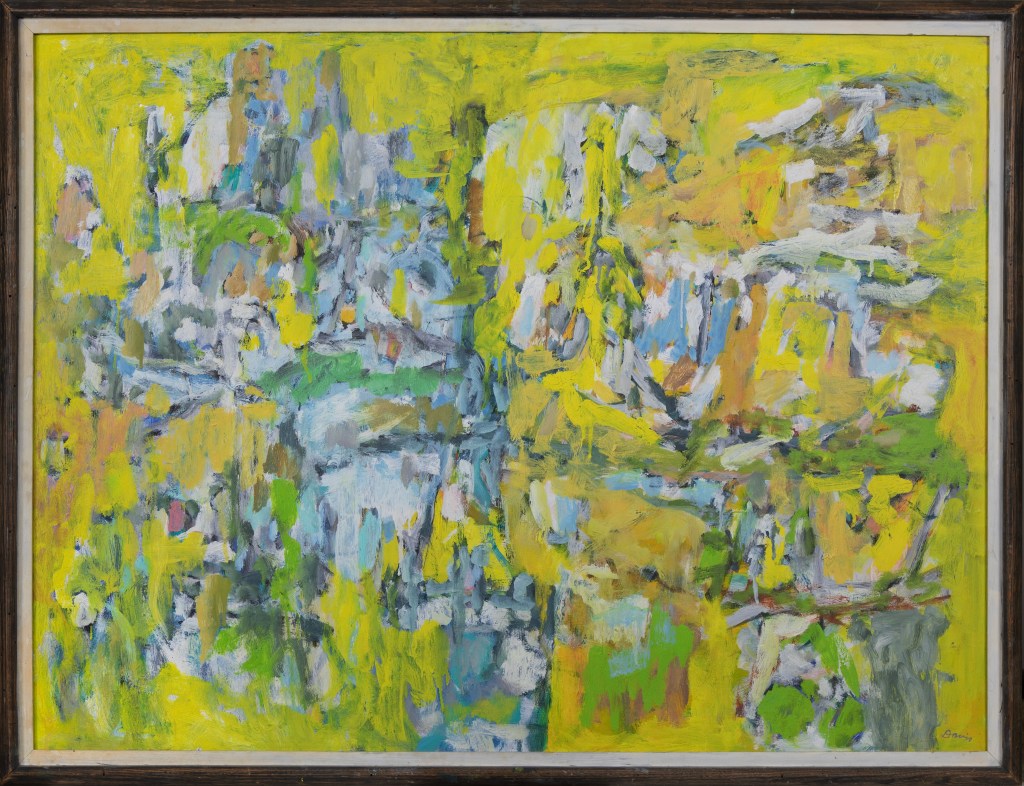The US State Department’s Arts in Embassies program recently announced a collaboration with the Smithsonian American Art Museum through a new long-term loan of Gene Davis paintings.
The collaboration will also be the first one between a Smithsonian Institution and the program, which was created in 1963 under President John F. Kennedy.
Art in Embassies director Megan Beyer told ARTnews she was especially excited for this collaboration because Davis was working in Washington as an abstract artist during the 1960s while Kennedy was president. “And Kennedy wanted to show the world that abstract art was a metaphor for the freedoms that we offer in a democratic society,” she said. “When he created the office, abstract art was kind of part of his plan for Art in Embassies.”
The 22 works will include the artist’s signature, large-scale classic striped paintings as well as other oil and acrylic works from Davis’ pre-stripe era, on blanket loan for 15 years. The selection will immediately be available to US ambassadors for residence exhibitions, and four of the pieces by Davis are currently installed at an exhibition at the headquarters for the Organisation for Economic Cooperation and Development in Paris. On October 23, the State Department also will unveil a Davis work in a ceremony with Secretary of State Anthony Blinken.
Partnerships with institutions like the Smithsonian are also crucial for the 60-year-old State Department program as its permanent collection numbers only 1,500 pieces. According to Beyer, around 80 percent of the works in embassy exhibitions are on loan.
“That slows down the delivery and makes it much more complicated,” Beyer explained, noting there are 200 ambassadors, each requesting about 20 pieces of art, and every request from an ambassador prompts an individual loan agreement. “While it works well, it doesn’t work as efficiently as if we just had a big collection of art.”
The office is aiming to streamline this process through additional, 15-year loans of artwork collections with more cultural institutions and museums. “Most museums have a finite amount of square footage,” Beyer said. “They also know these pieces are going to be on view all over the world. It’s a very unique exposure.”
Art in Embassies’ process starts with every single ambassador sitting down with one of six curators and going through all the diplomatic imperatives that they have just been briefed on in the State Department. “They think about what conversations they want to have, and they curate to that,” Beyer said.
As a result, the chosen works can have soft power in helping raise attention to different issues and American values, including freedom of the press and freedom of speech. In 2023, Art in Embassies also initiated a traveling exhibition, artist exchanges, a worldwide competition for students, and an expansion of the State Department’s collection of artworks, as part of programs aimed at strengthening democracy.
“It’s almost like having a third person say out loud on your wall what you as a diplomat might not say so out loud,” Beyer said. “I mean, it’s very helpful in supporting and we call it the infrastructure for you know what they want to get done.
In 2009, Beyer went through the State Department’s curation experience herself after her husband, US Rep. Don Beyer (D-VA), was appointed to be an ambassador to Switzerland and Liechtenstein under President Barack Obama. To convey the US administration’s change in environmental policies, the Beyers chose paintings for their residence from the Virginia Museum of Fine Art showing scenes of the Hudson River Valley where Don had hiked the Appalachian Trail. The current paintings exhibited at the residence of US Ambassador Scott C. Miller are first-generation American artists, such as Haitian American painter Didier William.
“The current ambassador now has an exhibition that is all on the issue of equality, because they’re struggling with immigration as sort of a hot-button political issue, they know that our country has had immigration as a political issue, and this kind of brings that conversation forth,” Beyer said. “That is one little example the way the art powers the conversations that you need to have in the residence, where, arguably, you have the most important bilateral meetings throughout your term.”



